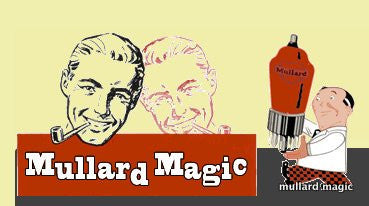So whats the story I hear you say? Well, during the 1930s, early tests showed that conventional make-up techniques were not suitable for television for although superb in real life or still photography it looked truly appalling on black-and-white television.
Just look at this photo showing what "slap" of the day looked like on a JLB televisor transmission: -
No wonder then that Peter Eckersley, the BBC’s chief engineer until 1929, put it: It was “An insult to the public to put on such a poor service and encourage the idea that the broadcast pictures would improve”. Further stating that “If they were not improved they were not worth transmitting”. Thereby sealing the fate of the 30 line mechanical system but that is another story....
That said, at the time, the Emitron camera or the Iconoscope cameras in the 'States were not much better and in the photo above, you see the father of the Iconoscope, Vladimir Kosmich Zworykin contemplating a range of camera tubes that showed some improvement.
The problems were myriad, high noise, low contrast, low sensitivity all conspiring to mar the looks of the fledgling TV starlets so what was to be done?

Well, in order to counteract the way these camera tubes registered colour in shades of gray, make up was used to compensate. Accordingly, green replaces red in make-up for television with green lipstick and rouge replacing the customary red in make-up designed for actresses appearing in television broadcasts., giving rise to real life visages such as the ones below:-
This photo does remind me of Mrs Mullard Magic in the morning - all that's needed is a set of curlers and they would be a dead ringer!!!!
Thankfully, Max Factor had developed a make-up for the new medium of television during the early 1930s so suitable shades were freely available if a little expensive! Even more fortunately, with the arrival of Orthicon camera tubes in 1940, due to their tenfold increase in sensitivity meant that the virulent make up was obsolete being replaced with more subtle tones by Max Factor in 1946 with their "Pan-Cake "TV make up range -still colourful but less of a "dead daughter" look I think.









